#Angular 8 Developer
Explore tagged Tumblr posts
Text
Embracing Angular 8: A Strategic Choice for IT Leaders in 2024
In the ever-evolving web development landscape, Angular stands out as a beacon of innovation, performance, and efficiency. With the release of Angular 8, the framework has again set new benchmarks, compelling IT leaders worldwide to take notice.
This blog post delves into the facets of Angular 8, enriched with the latest 2024 insights from leading market research firms, Forrester and Gartner. It explores why Angular remains the preferred choice for IT leaders over other technologies.
Angular 8: Unveiling the New Features
Angular 8 introduced several groundbreaking features, hire angularjs developers to simplify the development process further. Key among these features were:
Differential Loading of Modern JavaScript: A game-changer for performance optimization, Angular 8 automatically generates two builds of your app: one for modern, ES2015+ capable browsers and another for older browsers. This significantly improves loading times and efficiency, a critical factor in user experience and search engine rankings.
Dynamic Imports for Lazy Routes: Before Angular 8, lazy loading routes required a specific syntax and using the angular-router-loader for Webpack. Angular 8 simplified this by introducing dynamic imports, aligning with the modern JavaScript standard, and streamlining the development process.
Improved CLI Workflow: Angular 8 enhanced the Angular CLI, introducing new capabilities like the ng deploy command, simplifying the deployment process to various hosting services. This is a testament to Angular's commitment to improving developer productivity and operational efficiency.
Web Workers Support: Angular 8 made integrating web workers into your projects more accessible, allowing more intensive computations to be offloaded to a background thread. This enhances the application's responsiveness and overall performance, a key consideration for complex, data-intensive applications.
Ivy Renderer Preview: Although still in preview, introducing the Ivy renderer in Angular 8 marked a significant leap towards smaller bundle sizes, faster rendering, and better debugging. Ivy promises to revolutionize Angular applications' performance, making it a highly anticipated feature for future releases.
Why IT Leaders Choose Angular
In the competitive technology sphere, IT leaders are tasked with making decisions that align with strategic business goals, including technology adoption that ensures scalability, reliability, and developer productivity. With its robust ecosystem and forward-thinking features, Angular presents a compelling case if you are looking to hire frontend developers.
Alignment with Modern Web Standards
Angular's commitment to embracing modern web standards, as evidenced by features like differential loading and dynamic imports, ensures that applications are future-proof and optimized for current and emerging web environments.
Developer Productivity and Experience
Angular's comprehensive framework, including a powerful CLI, rich libraries, and a unified development approach, significantly boosts developer productivity. This ecosystem enables rapid prototyping, development, and deployment, which is crucial for meeting tight deadlines and high-quality standards.
Performance and Scalability
Performance is a non-negotiable attribute of modern web applications. Angular's architecture, coupled with features like the Ivy renderer and web workers, ensures applications are fast and scalable. IT leaders can use Angular confidently for small- and large-scale projects.
Community and Ecosystem Support
Angular benefits from strong community and corporate support, providing resources, libraries, and tools. This ecosystem ensures that Angular remains at the technological forefront, addressing emerging challenges and incorporating innovative solutions.
Insights from Forrester and Gartner in 2024
While direct quotes and statistics from 2024 Forrester and Gartner reports are beyond my scope, historical trends and expert analyses have consistently highlighted Angular's strategic advantages. These include its comprehensive feature set, robust ecosystem, and alignment with enterprise needs. IT leaders, driven by the need for robust, scalable, and efficient web solutions, often cite Angular's continuous evolution, community support, and corporate backing as critical factors in their decision-making process.
Conclusion
As we navigate through 2024, Angular 8 stands as a testament to the framework's enduring relevance and pivotal role in shaping the future of web development. Its innovative features enhance developer experience and productivity and significantly improve application performance and user satisfaction. For IT leaders, the choice of Angular is more than a technological preference; it's a strategic decision that aligns with long-term business objectives, ensuring their organizations remain competitive in a rapidly changing digital landscape.
In adopting Angular 8, IT leaders are leveraging technology and investing in a future where efficiency, performance, and innovation converge to create exceptional digital experiences. As Angular continues to evolve, it will undoubtedly remain at the forefront of web development, guiding enterprises seeking to thrive in the digital age.
#software development#mobile app development#web development#angularjsdevelopmentcompany#frontenddevelopment#angular 8
0 notes
Text
Audition
Author's note: @transform4u requested a story, so this one's for him. This is kind of a departure fore me. It's mostly done in first person, which I don't usually do. I hope you enjoy it.
“I wish I didn’t have to remember all these lines,” the words came out as a whisper. A soft breeze blew in the theater. “Granted,” it seems to say in the wind that chilled you to the bone. The words on the script faded away, being replaced with a signed contract with a television company. Something about documenting your life for the next few months. Leaving your home and going to a time-share with some other people. You look at the paperwork confused. A buzz infiltrating your brain.
“Rocko”, the director calls me. I’m confused. Isn’t my name Richard? “Rocko Salvatori? On stage please.” He looks at me and I head up to the stage for an audition?
The director looks at me and asks, “Hello, Rocko. Your resume says your favorite hobby is working out? Can you tell me about that?”
“Working out? No, I mean,” images of the time I’ve spent in the gym, dedicating time and sweat and tears to making my pecs and bis grow. Never skipping leg day. Always taking creatine mixed with pre workout, downing protein shakes and doing endless crunches... Gotta take care of the “situation”.
“Yeah,” I say. “I go to the gym five days a week. Can you tell?”
I flex a bicep that seems to grow out of nowhere. Ten inches around turns in to 12 inches, turns in to 15 inches, turns in to 20 inches. I flex my pecs. Since when do I flex my pecs, I ask myself? My pecs inflate with newfound muscle. Growing to a whopping 50 inches around.
I find my body stretching taller… legs more so resembling long logs, stretching to the sky, torso stretching out, getting rid of the pudge that used to be there, and developing in to 8 separate rocks, an 8-pack of abs.
My dick growing longer and longer now resembling a beer bottle in length and girth. “Fuck yeah, I work out, bro,” I say.
The director asks, “I also see that you’ve done some modeling?”
Images of past gigs fill my memory. That time I was flown down to Cancun to appear on a show for MTV Spring Break. That photo shoot for a young adult clothing brand. That one time he posed for Exercise for Men Only. “Yeah, bro,” you find yourself saying. “I aced modeling.” Your face reshapens. Jawline becoming sharper. Cheeks becoming accented, less round, more angular. Eye brows becoming shaped, more perfect. Teeth whitening, glowing, straightening. Eyes becoming more clear, turning from blue to a sharp glowing brown. Stuble growing around your chin and mouth area. Your thick black hair standing straight up, held up with a precise amount of Spiker hair gel and a 16-second spray of Got 2 B hair shaper and molder. You give ducklips pose to the director, and bring out your phone to take a selfie and post it on Instagram.
The director clears his throat. “Under life philosophy you just wrote GTL. What does that mean?”
“Bruh,” you say, your brain rearranging information. Reprogramming your memories, your thoughts, making you a different person.
“Bruh, it’s a way of life. A philosophical kind of being. Gym, Tan Laundry. You gotta take care of your bod… your pecs, bis, and abs… I like to look fresh, so everything has to go in to it. You know, you have to go to the gym the whole week. Tan. You have to have color if you didn’t go to the beach. And then the last thing you need to take care of is the outfit. You gotta look fresh, you know. If you don’t look good, you ain’t gonna feel good bro, and then you ain’t gonna have a good night.”
You give in to the words that are coming out of your mouth. Gym.Tan.Laundry=LIFE, bruh, Fuck yeah. Gotta be FTD, Fresh To Death. Looking for hunnies DTF. Down To Fuck. Hell yeah! The thoughts running through your head.
“Rocko,” the director says, “it says here that you identify as a Guido? Can you tell me about that?”
The words go through my head. Guido… Guido… Fuck Yeah, I’m a fucking Guido.! I GTL all day and am DTF all night. I go out FTD, and get all the pussy I want. I am so Hot, So Fresh. I’m a fucking Guido. “I’m a Guido. What’s there to explain? I work out, tan and clean up fresh. I go out and party all night and bring home the PU-NA-NI, you know what I mean? And I have over three million followers on my social media.”
Red flashes over the director’s eyes, and a demonic façade flashes over the director’s face, just for a second. “You’ll be perfect for the next generation of our new reality show, Rocko.”

#male tf#dumber#jockification#reality change#personality rewrite#jock tf#guido tf#douchebag tf#muscle growth tf
101 notes
·
View notes
Text
ROCK EMOJI RATING
I sent a rock emoji in Discord today and let me tell you i was stunned by what i saw. I needed to know if all rock emojis were that bad, or if it was a special stand-out. I won't spoil the answers, but here's my rating of ever rock emoji, as listed here: https://emojipedia.org/rock#designs
Since I started here, we'll start here together: This is the rock used on Twitter/X and also Discord:

it looks like a de-saturated blob of chewed gum. That's not a solid object, that's goop. 3/10
WhatsApp (2020-2023)

I see what they're going for here- it certainly looks like a rock, and I appriciate the attempt at giving it a kind of crag-y nature to it, but to me it ends up looking a bit disjointed. The texturing is nice, I like the wavy lines on the side- i'm not sure if real rocks would have a pattern like that but I see what they're going for. 8/10
Next up, Microsoft,... OH microsoft baby what are you doing DOING

the first one was fine!!! It was so fine!!!! The shading is ok, and the thick black outline was really helping to define it as an object. Without the outline its hardly there. It's not even a unique shape its just a slightly wonky triangle, and the shading makes NO sense on the newer ones. I don't like it. the past is in the past, they're being rated for their current sins: 2/10
Microsoft 3D fluent (2023)
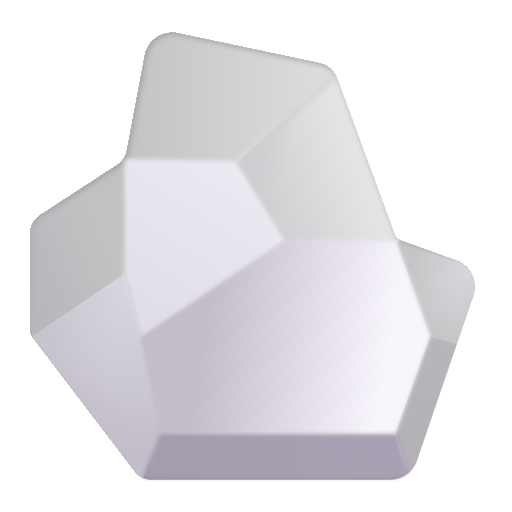
this looks like the texture for an iron nugget in Minecraft, which sure, iron is a type of rock, i guess. it also looks like the free to earn currency in a sci-fi NFT game. Still identifiable as a type of rock, i guess. 5/10
Samsung (2020-2023)

This one is nice- its a rock. I like the gloss, it seems polished, which is maybe a bit funny because its simultaneously polished but also a bit mossy at the bottom, but these are all aspects that rocks have, and thus that makes it a good stand in for the concept of a rock. 8/10
Google Noto Color Emoji (2020-2023)

Well, its a rock. I appreciate how it leans more into a warm grey as opposed to all the cool tone (or..straight up white????) rocks we've seen so far. My main issue is with the bit of shading in the center of it- I'm typing this on a computer and haven't seen this emoji in its native environment of being small on a phone screen, so I tried zooming out the webpage as far as it'd go (30%) and the shading certainly looks better small, but it still strikes me as a bit off- i wonder if it really needs to be there. Not a bad rock by any means though, 7/10
Noto Emoji Font (2023)

So, this is actually a black and white version of the previous emoji, and that makes me appreciate both more. I wish they followed the shape of the lines more with the color emoji, because here the shape is really spot on. It's both a rock and a mountain. 8/10
Apple (2020-2023)
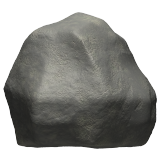
This isn't just a rock, this is a CHUNK of EARTH. it's got DETAIL, its got STRIPES. it's a nice fucking rock. 10/10
Emojipedia Sample Images (2020)

"Sample emoji designs developed by Emojipedia for illustrative purposes." (Emojipedia)- hey quick question....sample of WHAT? Illustrative of WHAT? This looks like a chunk of ore from an old school RPG. This is ripped from Runescape (not actually). It's the only rock that's straight up green. It looks WORSE when its smaller. 7/10
Icons8 (2023)

Ok. I can't hate every single one of these kind of simplistic rock emojis that are just angular blobs of color...but with something as simple as a rock its just so hard to get it minimal in a satisfying way- but it's NOT impossible. This one isn't so bad, its just kinda...meh, I guess. 5/10
OpenMoji (2020-2023)
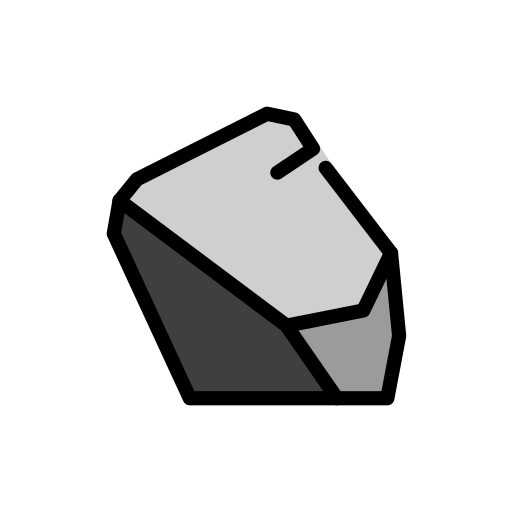
colorized Pictochat drawing. You could fight on this in Super Smash Bros. The last of the black outlined rocks (well, kinda)- though for some reason the lines don't fully connect. It almost looks like a face to me for some reason. 6/10
Sony Playstation (2021)

this is a minimal rock done well. The shading makes sense, its got a solid rock shape. 6/10
TossFace (2022-2023)

what the fuck is this. It looks like the doodles all over my school work after i learned what a vanishing point is. It's simultaneously popping out at you and receeding back into the screen. Lighting? Who is she. awful. 0/10
JoyPixels (2020-2023)

this one is battle scarred. This is a rock that's been through some shit. 3/10
Twitter Emoji Stickers (2022)
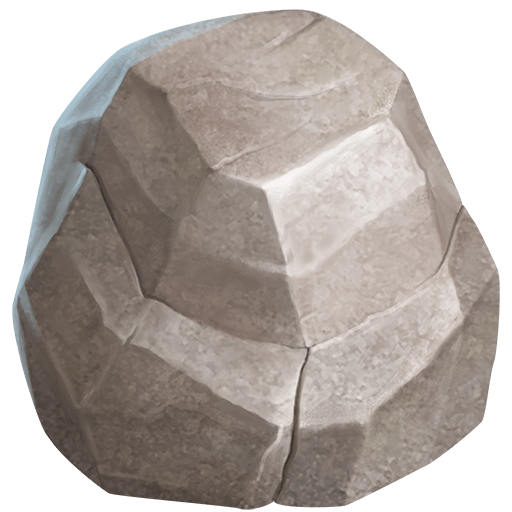
WHAT A LEGEND. This looks like an asset from a mobile game. Love the sheen and the perspective. It's even a warm grey! Such a fantastic Rock. 11/10
Microsoft Teams (3D Animated) (2023)

well I'll be damned, a competent Rock from Microsoft. I don't know why they lean so heavily into cold light greys, but hey at least this one isn't straight up white I guess. 5/10
Huawei (2023)

This looks like an unmoulded lump of clay- its even got divots that are roughly fingerprint shaped. Not bad though. 4/10
Facebook (2020-2023)
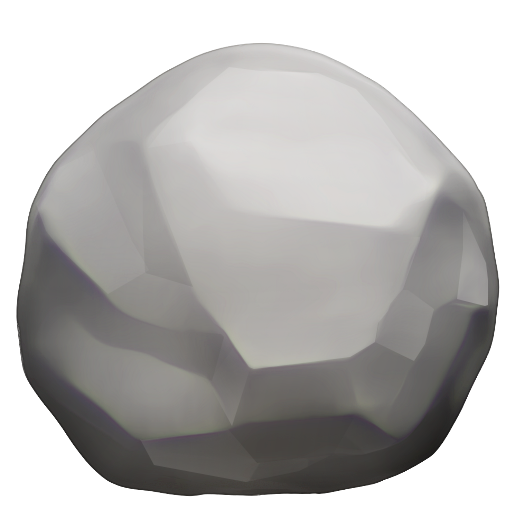
This looks like someone's 4th ever attempt at shading something realistically. Its an unblended circle, except it seems like they tried to blend a ,little bit in places and it looks...incredibly sloppy up close. what the fuck. 1/10
Well, that's my review of ever Rock emoji listed on Emojipedia, hope you...enjoyed? To finish things off heres my own drawing of a rock done in MS Paint

34 notes
·
View notes
Text

[ID: Sketch of Redemption-era Parker standing some distance behind Eliot, who has messy hair and is deeply shadowed, the part of his face that is lit up showing blood spatter on his face. End ID]
-
Day 8: Dissociation
Parker cautiously approaching Eliot after he's had a moment of complete dissociation and killed a lot of people.
Ficlet below the cut (the final part of a 3-part fic that will develop in reverse over the month)
- Parker watched the silhouetted form of Dr Paul as he tied the boat to some angular shape at the base of the steep rocky beach. He was lit up dimly by the lights from the building a few yards inland, and by the frustratingly beautiful moon. Behind her, the ocean was vast and dark, and the deep shadows on the boat itself made it feel like standing on nothingness. In a moving abyss beneath the clear, cold night sky.
They had shut off the lights of the boat as they neared the island, Paul carefully directing the boat in as Parker watched for the rocks.
They had to evade detection. If they were seen now, it was all over. Element of surprise lost, and with it probably Eliot too. They could maybe escape, but they'd never get a chance like this again.
The sound of Breanna typing broke the calm, gentle lapping of the waves and the soft tapping of the boat against the shore. She was working to get access to the building's security system now they were within range. Close enough for her to sneak inside their system. Get a map of the building and views into the cameras.
From the boat, she would guide Parker and Paul inside and to wherever Eliot was being held, and help them get back out.
Breanna was working as fast as she could, but it was taking so long. It was already past midnight, and they needed to be in and out before dawn.
Paul had returned to the boat, taking a seat and waiting, both he and Parker with eyes fixed on the building. Shrouded in part by a small band of trees and the steep rocky shore, but visible, lit up against the dark sky.
The wind through the trees made it look as though the lights were moving, and maybe people within them, but it was an illusion messing with Parker's already on-edge mind.
Breanna's hushed cry of victory drew their attention, but when they turned, her expression had fallen. Not to despair. To shock.
“I…” she started, her voice cracking on the word, “I don’t think Eliot needs rescuing…” She turned the laptop around, hands shaking as she held it out for them to see.
Camera feeds, cycling through, four on the screen at a time.
In several, there were forms, people. Propped against walls, strewn across floors, over tables. None moving, though dancing shadows and flickering lights in some made it seem as if they might be. Parker wanted to think they were unconscious, just knocked out, but the staring, unseeing, eyes of at least two suggested otherwise. Not to mention the dark spots, patches, on the chests or heads of many that could only be blood.
She took a slow breath, trying to suppress the feelings of intense sadness spreading through her, and turned to Paul, “Let’s go.”
The doctor nodded, “Breanna, you should go below. No lights, not even your laptop.”
Why?
Breanna didn’t ask, Parker knew.
If Eliot had lost control, if he wasn’t himself and he slipped past them, found a boat to escape on, it would be better if he didn’t see anyone onboard. The controls were all above deck. Someone could hide and not be found below.
As they climbed up the beach and reached the more even ground, getting closer to the building, Parker realised that what she had thought were lights on in the building were flames. Flickering, glowing, some orange, some a strange, purple hue.
The whole building was slowly going up in flames.
With the dancing shadows and uneven light, Parker almost failed to see the lone figure stood in front of the building. The only thing in that scene that seemed not to move.
Paul stopped and held up a hand, fist closed, just like Eliot did to make them stop.
“Go ahead,” he whispered, “I’ll shadow you, and move in if necessary.”
At her questioning glance, he smiled kindly, “Eliot told me you understand him in a way no one else does. I think you’re the best person to get through to him right now.”
She nodded, and maybe she looked afraid because he added the reassurance, “I’ll be right there. I won’t let him hurt you or himself.”
Parker could see why Eliot liked this Dr Paul so much. He sounded confident, he sounded safe and reassuring and like he was willing to understand.
And Eliot trusted him so she would too.
She slowly moved closer.
Eliot didn’t move at all as Parker approached him, slowly crossing the space between the shore and the hitter, but she saw the slight increase in tension when she was within four feet, and so there she stopped.
He was facing away, towards the slowly burning building, but he was aware of her presence. Maybe of Paul's too. She could sense him just beyond her, veiled by thick shadow.
There was something wrong with the way Eliot stood. She couldn’t define what it was, but it made her nervous. Absurdly nervous. Her throat felt raw and her heart beat faster. A fear she had never known around Eliot before - the sense of a threat.
It was nonsense.
Eliot had never - would never - harm her.
So she took another step. Another two steps.
Close enough now that even in the darkness she could see the red spattered over his skin and clothes. A shirt too big. It wasn't his. General, cheap fabric...a guard's shirt probably.
One more step, and Eliot turned, too quick for her to register what was happening before he had almost got a hand over the back of her neck.
At the same time, Paul appeared from nowhere, got between Parker and Eliot, but Eliot had faltered before reaching either of them, and he stumbled unsteadily back.
His eyes were unfocused, but he seemed to catch sight of her and his gaze fixed on her's.
“Parker,” Eliot’s voice cracked on the second syllable, and he swallowed, winced and looked away.
“You can’t be here,” he said quietly, voice a mere whisper. She understood why, and what he meant.
Eliot was not in full control of himself.
He was dangerous.
“We’re not leaving here without you, Eliot.”
He shook his head, and turned back to the building, seeing not only the crumbling structure but no doubt the gore that lay within. The aftermath of what Eliot could do. The violence he was capable of, even now.
Parker knew that the torture he had been through must have dredged up memories. All that past that would always torment him.
She also knew he was on the edge, his control faltering, he awareness unsteady.
“You won’t hurt us, Eliot,” she didn’t move any closer, kept herself out of the invisible boundary that defined a threat, “I know you won’t hurt any of us.”
“You don’ know that, Parker,” he rasped.
“Yes, I do. I trust you,” she replied firmly, “We trust you.”
He shook his head, matted hair and the blood in it catching in the light of the burning building.
How long before emergency services turned up?
“Eliot,” she took one step closer, “It’s over. Come back now.”
For a second he tensed, but his hands were shaking, and the tension ebbed away.
He still didn’t turn back to her as he asked, “Hardison keepin’ tabs?”
“Always.”
“We need to wipe their data.”
“Breanna can…”
“No,” he said sharply, then softened back to that uneasy rasp, “I don’ want…they recorded it. Their experiments.”
Parker nodded.
Breanna might look at the files, and Eliot didn’t want Breanna witnessing that torture.
Hardison knew not to look if Eliot asked him not to. He could rein in his curiosity because he trusted that if Eliot told him not to look it was for a good reason. Over long years of working together, that trust had been built, developed, honed into something unseen and beautiful.
Hardison couldn’t hear them.
Too far for comms.
But he was monitoring in whatever way he could, and he knew they had set out to rescue Eliot. They had all his attention now.
Keeping her eyes on Eliot, Parker pulled out her phone, and looked away just long enough to send an email, one quick form of communication she knew would reach Hardison all the way up in the exosphere.
Eliot says we need to wipe all data here can u do it? Bad guys recorded everything and he doesnt want any1 seing
The last she typed without looking, her attention pulled up as a large part of the burning building crashed in on itself. Logically, she knew no one was left alive in there, but she chose not to think about that. Eliot was thinking about it enough for them both.
Her phone vibrated, lit up, and Eliot suddenly tensed, his posture changed, aware of the threat. Parker practically felt Paul tense beside her, reading to intercept if Eliot tried to attack again.
“Hardison’s emailed back,” she said, holding up the phone, and as he looked over at her, she caught a flash of genuine, open fear on his features.
Parker looked back to the phone, hid the tears that expression forced into her eyes behind her fringe, and focused on Hardison’s words.
On it. I can piggyback onto Breanna’s connection and get access. You just gotta stay in range for about ten more minutes. Let you know when it's done. Take care of our boy xx
She would, if she was able. He sure as hell needed it. Eliot had been gone for seventeen days, spanning across Christmas and New Year’s…
She swallowed down the wave of fury, an anger that no longer had an outlet since the perpetrators were definitely dead, and put away her phone.
“Hardison’s working on it,” she said, looking back to Eliot was still stood, watching the building in silence, “He’ll get rid of all their data.”
Silence.
“Eliot, we need to go.”
“Who’s here?”
“Me, Breanna, and Dr Paul,” she replied.
Eliot frowned, “Paul?”
“Yeah, Dr Not-Dead-Paul.”
“I know who…” he winced, shook his head, and scanned the darkness until he eventually seemed to manage to focus on the third person standing there.
Paul smiled at him, “Hola.”
Eliot nodded, not managing a smile in return, looking caught between pain and confusion.
“Ready to get out of here?”
“We have a boat,” Parker added when Eliot looked around as if searching for something, “Just over there. So come with us?”
After a too long pause, he inclined his head.
“Can you walk?” Paul asked, moving an inch closer.
Eliot frowned, then raised an arm, his hand almost hidden under the cuff of the too long sleeve. Paul moved in and ducked under, wrapping an arm around his waist to help take his weight. At a look, a familiar and properly Eliot, glance from her hitter, Parker moved in to help on his other side.
Together they half-carried him across to the shoreline, stumbling unsteadily over the uneven rocky beach, and unceremoniously managing to get themselves all into the boat.
“Where’s Breanna?”
“Cabin below deck,” Parker replied.
Eliot nodded, “How long we got?”
“At least fifteen minutes.”
“Enough time for you to drink this,” Paul handed Eliot a bottle of water, “And let me take a look at your injuries.”
At first, Eliot obliged, sitting down and opening the water as Paul got out his first aid kit and a torch. But then Parker moved, not needed for this and feeling in the way, and he tried to stand.
“Parker! Wait,” he held out a shaking hand and withdrew it quickly, “S-stay. Stay where I can see you. Please.”
That word with almost exactly the same intonation as his plea for her not to ask him what he did for Moreau, and with the same heartbreaking effect.
Just like then, she nodded with tears in her eyes.
If this was what Eliot needed, and he did. As Paul carefully inspected his physical injuries - minor for the most part, save for an incipient infection of the mess of broken skin on his right arm where he had been repeatedly injected - Eliot intermittently focused on her or Paul. If ever his eyes landed on the darkness, on empty space around them, his expression changed. Became pained or sad or, worst of all, empty. Then Parker moved, caught his attention, brought it back to her. Kept his mind in the present and on the people here right now who cared for him.
When they got home, she would call Hardison. He would know what to say to help make Eliot feel right again. Maybe they’d put on a film they’d seen a thousand times before, and Paul would stay too. Surround Eliot with familiar, safe, happy-making things until his mind could finally escape the weeks of brutal torture.
-
#ailesswhumptober2023#Day 8: Dissociation#leverage redemption#parker#eliot spencer#cw blood#cw murder
56 notes
·
View notes
Text

This little jerk. He took forever to finally draw, but that makes sense, because this is Jordan, and he is the most stubborn, ornery, antagonistic little punk in the group of super power kids. Not surprisingly, he's on the villain team at first (the villain kids aren't literally "evil", they just have some angst to work through, and also like to cause a ruckus. sometimes the real bad guys are hiding behind a false persona of being good, or they have a lot of money/power as a shield against repercussions, so the only way to even the odds is by breaking the "rules"). Jordan had a rough time when he was little; his dad ditched the family, and then his mom also abandoned him. He's got an older half-brother out there, but the guy is NOT responsible enough to take care of a kid. So, little 8-year-old Jordan started going to different foster homes. He got labeled a "problem child" pretty fast, and not many people wanted to deal with him... but then, when he was 10, he met Corbin. This was a guy who knows about problem kids because he WAS a problem kid, and his own son WAS a problem kid. Corbin took in Jordan, and it didn't matter how rebellious and rude the kid was, Corbin never gave up. Jordan found somebody who could put up with the yelling, even yell back, argue back and forth, and eventually give him the chance to calm down, talk things out, and apologize. When Corbin found out his son needed help in another state, he asked how Jordan would feel about moving, and so they both came to California, Jordan got to know his older foster brother Travis (and they quickly feel like they've been brothers their whole lives), and started a new school... where he got a reputation as a trouble-maker again, but that's just who he is! Jordan isn't ALL bad, he's very loyal and protective, and while he's risk-taker on his own, he's concerned for other people staying safe. At his best, when he's comfortable just being himself, Jordan encourages other people to have fun and not be afraid to make mistakes. Also, being a little bit of a jerk who is secretly considerate means he has is VERY aware when somebody else is crossing a line (being too cruel or hurtful). Jordan is 15, and is starting to think about stuff in life, how he wants to do better, but not just conform to some fake idea of being "perfect". When he starts to develop super powers, Jordan gains the ability to transform into a large, canine-like creature... but he's not a werewolf! He's like an anthro Cerberus, and so that's the name he goes with (he's actually more of chimera monster; his "middle" head is the most human, but he can have two extra canine heads above his shoulders. these are mostly for intimidation, but for more practical transformations, he can divide his arms, so he has 4 on each side, or keep his arms as 2 but the ends change into snake heads, capable of biting/stretching out for more reach! the monster body is mostly like a combination of human/canine, but he's got some scales and claws for a bit of a dragon vibe). This is his regular kid look here; a slightly chunky body-type, standing in a very intentional slouch, with his arms just hanging at his sides, and a sarcastic smirk on his face. His hair is black, in an undercut, swept over to one side. He has an angular face, pierced ears, and while the simple pixel-style doesn't show it, he also has heterochromia (one green eye, one blue). He has a plain whit shirt, with the sleeves cut off (looking a little shredded on purpose). His pants are a dark-magenta, styled with lighter patches, he has dark brown boots with the laces loose, and studded wristbands
4 notes
·
View notes
Text
Cinder's Racial Ambiguity Frustrates Me (Spoilers for The Lunar Chronicles)
Hi hello long time no post! I haven't had a chance to really consumed any media until just recently so I'm finally back with another review!
Today we're gonna talk about The Lunar Chronicles, written by Marissa Meyer, and published in 2012. I had read this novel back in 2015/2016 when Fairest and Winter were newly released and had the opportunity to reread it (albeit in audiobook form) these past few months. Buckle up babes, I have a lot to say.
I wanna just say right off the bat that in terms of world-building, plot, and even character design, this story still holds up quite well from when I read it the first time. From how each character gets their own time to shine and development, to how they all connect with one another, I loved seeing the major plot unfold and how it concluded so nicely.
But I do want to discuss something that has bothered me from the first time that I read this series and still does after reading it a second time: Cinder's race.
Now you may be wondering, why do we care what Cinder's race is? Well, I'm Asian, Singaporean to be specific. And it would be great if Cinder's race was Asian/Chinese as the website, as the author, and as most people in the fandom believe to be. However, I am skeptical for this to be the case at all.
We don't know what race(s) the Lunars are.
They're an "evolved" race of humans that have magical abilities. Even Meyer herself states that the ethnicities start to blend because it's so far in the future. It's already quite difficult to pinpoint specific ethnic groups just in the royal family.
Queen Channary had olive skin and dark brown hair which could be a myriad of ethnicities and races although I'm heavily inclined to believe that she is/was South/Southeast Asian due to her name being taken from the Khmer dialect found in Cambodia [evidently in the wiki]. Even Queen Jannali was described to have had tan skin and chestnut colored hair, which again, says nothing about her race, but her name was taken from the Aboriginal language [also found on the wiki] so that may count for,,, something. Essentially, following Cinder's lineage, we already have little evidence to support the idea that Cinder is Asian, let alone Chinese.
Cinder's description in the book did not help her case (and I believe Meyer attempted to retcon this later on, like, look at the new covers - she looks so [East] Asian, but then you read the description in the actual book??).
Her first description in Cinder was tan skin, angular body, and mousy brown hair. Mousy implies, light brown. Literally look up "mousy brown hair" online, you'll see a bunch of eurocentric, white women. No Asian that I know, naturally, has "mousy" brown hair unless you dye it or it is heavily sun-bleached (which has happened to me but still not light enough to be considered "mousy", I could have safely called it brown). Cinder was also told by the end of the book, that she was found in Europe. You can see that as someone who's been wanting an Asian MC would be disappointed with finding out that ah, she must be European (and later, more than likely, French). Even if Cinder was Wasian, I believe genetically, the dark hair would have been dominant. I can't say the same for the tan skin since she was outdoors a lot and Asian folks do tan quite easily in the sun and remains tanned for at least 6-8 months.
I would love for Cinder to be Asian, I really would, but all of this evidence just keeps her race too ambiguous personally. I can't seem to get over the "mousy brown hair". If not for this particular descriptor, I would 100% believe Cinder to be Asian. But because we don't even know Channary or Jannali's race with only their names as some kind of clue to Cinder's background, we will never know for sure.
I don't think it helps that a majority of fanart I see of Cinder has very eurocentric features, which draws me back to her thinking she's French/European. It also bothers me that while Winter and Iko get rather well-written descriptions of what they look like (aka black), we can't seem to get one good description, showing some form of Asian representation that I'm sure many of us are grasping at straws for, of the main character of the series. So many of us are still hoping that Cinder is Asian simply because she's living in New Beijing (which I will be making another post at some point about how I, personally believe, is a poorly designed/created city in terms of world-building) but she's literally adopted from Europe (Luna if you wanna get technical, see the first point).
I know my points are kind of moot and there wasn't much warrant for me to go on a tirade about a fictional character created in 2012. But this is important to me as a WOC, as an Asian girlie who so wants to connect to a character that looks like me, that was written to look like me; but I feel cheated and the ambiguity makes it hard for me to fully love Cinder as much as I love the other characters (if anyone is asking, my favorite characters are Winter and Scarlet). If anyone else has thoughts about this or has something to prove to me once and for all that Cinder is Asian. Please send it my way.
PS I wish I had a physical copy to directly quote the book, but again, my second reread was through audiobooks, so I can't reference pages at all atm. Sorry about that TuT Hopefully I can get my hands on a copy from the library soon so I can edit this post with direct lines.
#the lunar chronicles#lunar chronicles#linh cinder#i just want cinder to be asian is that too much to ask ToT#marissa meyer
11 notes
·
View notes
Text
How to Dress for Your Body Type (Kibbe Style Guide)
Finding the right style that complements your unique body shape can be transformative. The Kibbe body type system, developed by David Kibbe in the 1980s, provides a holistic approach to dressing for your natural silhouette. Unlike conventional systems that focus solely on size or proportion, the Kibbe style guide combines physical features with personality and essence to create a harmonious look. Here's an in-depth, guide to dressing for your Kibbe body type.
What is the Kibbe System?
The Kibbe system categorizes body types into five main families: Dramatic, Natural, Classic, Gamine, and Romantic. Each family has subtypes, making a total of 13 distinct categories. These categories are based on the yin-yang balance of your body structure, facial features, and overall essence:
Dramatic: Sharp, angular lines (Yang-dominant).
Natural: Relaxed and uncontrived (Yang with soft edges).
Classic: Balanced and symmetrical (Equal Yin-Yang).
Gamine: Petite and playful (Mixed Yin-Yang in a compact form).
Romantic: Soft, curvy lines (Yin-dominant).
How to Identify Your Kibbe Body Type
To determine your Kibbe type, consider your bone structure, body flesh, and facial features. Online tests, guides, and professional consultations can help, but self-assessment is key. Pay attention to whether your features lean more angular (Yang) or soft (Yin) and how they blend together.
Dressing Tips for Each Kibbe Body Type
1. Dramatic
Dramatics thrive in bold, structured designs that emphasize their angularity.

Key Features: Long lines, sharp angles, and a commanding presence.
Best Clothing Styles: Tailored blazers, straight-leg pants, monochrome outfits, and dramatic high necklines.
Avoid: Overly frilly or delicate details, as they clash with your natural sharpness.
2. Soft Dramatic
A subtype of Dramatic, Soft Dramatics combine sharpness with a touch of Yin softness.
Best Clothing Styles: Bold, flowing fabrics, asymmetrical designs, plunging necklines, and dramatic accessories.
Avoid: Boxy cuts or overly stiff fabrics that downplay your curves.
3. Natural
Naturals shine in unstructured, relaxed outfits that highlight their easygoing essence.

Key Features: Broad shoulders, slightly blunt features, and a casual vibe.
Best Clothing Styles: Loose cardigans, linen dresses, relaxed denim, and earthy tones.
Avoid: Overly tailored or fussy details.
4. Soft Natural
Soft Naturals need a blend of relaxed structure and gentle curves.
Best Clothing Styles: Peasant blouses, wrap dresses, soft knits, and layered looks.
Avoid: Stiff fabrics and overly angular designs.
5. Flamboyant Natural
With added drama, Flamboyant Naturals can pull off oversized and bold styles.

Best Clothing Styles: Statement coats, wide-legged trousers, and dramatic prints.
Avoid: Overly delicate or dainty pieces.
6. Classic
Classics look best in timeless, symmetrical styles that emphasize balance.
Key Features: Evenly proportioned and refined.
Best Clothing Styles: Tailored suits, pencil skirts, A-line dresses, and simple jewelry.
Avoid: Over-the-top trends or excessive detailing.
7. Soft Classic
Soft Classics need a touch of Yin softness to their balanced look.
Best Clothing Styles: Feminine blouses, soft pleats, subtle patterns, and delicate accessories.
Avoid: Harsh lines or overly loose fits.
8. Dramatic Classic
A dramatic twist to the Classic balance, Dramatic Classics excel in sharp but symmetrical designs.

Best Clothing Styles: Structured blazers, tailored jumpsuits, and bold yet refined patterns.
Avoid: Overly flowy or casual designs.
9. Gamine
Gamines embrace playful, high-contrast styles that highlight their petite frame.
Key Features: Compact and youthful with a mix of Yin and Yang.
Best Clothing Styles: Cropped jackets, ankle pants, quirky patterns, and bold accessories.
Avoid: Overly long or flowy pieces.
10. Soft Gamine
Soft Gamines blend playful energy with gentle curves.

Best Clothing Styles: Ruffled blouses, short skirts, intricate patterns, and layered jewelry.
Avoid: Heavy or overly structured styles.
11. Flamboyant Gamine
Flamboyant Gamines shine in edgy, high-contrast outfits with angular details.
Best Clothing Styles: Sharp crop tops, bold prints, statement accessories, and graphic lines.
Avoid: Overly delicate or symmetrical designs.
12. Romantic
Romantics thrive in soft, feminine designs that highlight their Yin-dominant features.

Key Features: Curvy, delicate, and graceful.
Best Clothing Styles: Draped dresses, lace details, floral prints, and soft pastels.
Avoid: Stiff fabrics or boxy silhouettes.
13. Theatrical Romantic
With added drama, Theatrical Romantics can pull off intricate yet feminine looks.
Best Clothing Styles: Structured but soft gowns, ornate jewelry, and sharp waist emphasis.
Avoid: Overly plain or loose styles.
General Kibbe Styling Tips
Focus on Harmony: Your clothes should complement your natural features, not overpower or contradict them.
Know Your Fabrics: Choose fabrics that align with your type—soft for Yin, structured for Yang.
Accessorize Thoughtfully: Accessories should echo your overall style—bold for Dramatic, delicate for Romantic.
Stay True to Your Essence: Authenticity is key. Dress in a way that feels natural to you.
Final Thoughts
Understanding your Kibbe body type can revolutionize the way you approach fashion. It’s not about fitting into trends but about embracing your unique essence. Use this guide to build a wardrobe that makes you feel confident, harmonious, and stylish. By dressing in alignment with your Kibbe type, you’ll achieve a look that’s effortlessly chic and uniquely you.
#momatos.in
#Kibbe body types#Kibbe style guide#Dressing for your body type#Kibbe fashion tips#Kibbe system explained#Yin and Yang fashion balance#Dramatic body type styling#Natural body type wardrobe#Romantic style tips#Gamine fashion guide#Classic body type fashion#momatosfashion
5 notes
·
View notes
Text
java full stack
A Java Full Stack Developer is proficient in both front-end and back-end development, using Java for server-side (backend) programming. Here's a comprehensive guide to becoming a Java Full Stack Developer:
1. Core Java
Fundamentals: Object-Oriented Programming, Data Types, Variables, Arrays, Operators, Control Statements.
Advanced Topics: Exception Handling, Collections Framework, Streams, Lambda Expressions, Multithreading.
2. Front-End Development
HTML: Structure of web pages, Semantic HTML.
CSS: Styling, Flexbox, Grid, Responsive Design.
JavaScript: ES6+, DOM Manipulation, Fetch API, Event Handling.
Frameworks/Libraries:
React: Components, State, Props, Hooks, Context API, Router.
Angular: Modules, Components, Services, Directives, Dependency Injection.
Vue.js: Directives, Components, Vue Router, Vuex for state management.
3. Back-End Development
Java Frameworks:
Spring: Core, Boot, MVC, Data JPA, Security, Rest.
Hibernate: ORM (Object-Relational Mapping) framework.
Building REST APIs: Using Spring Boot to build scalable and maintainable REST APIs.
4. Database Management
SQL Databases: MySQL, PostgreSQL (CRUD operations, Joins, Indexing).
NoSQL Databases: MongoDB (CRUD operations, Aggregation).
5. Version Control/Git
Basic Git commands: clone, pull, push, commit, branch, merge.
Platforms: GitHub, GitLab, Bitbucket.
6. Build Tools
Maven: Dependency management, Project building.
Gradle: Advanced build tool with Groovy-based DSL.
7. Testing
Unit Testing: JUnit, Mockito.
Integration Testing: Using Spring Test.
8. DevOps (Optional but beneficial)
Containerization: Docker (Creating, managing containers).
CI/CD: Jenkins, GitHub Actions.
Cloud Services: AWS, Azure (Basics of deployment).
9. Soft Skills
Problem-Solving: Algorithms and Data Structures.
Communication: Working in teams, Agile/Scrum methodologies.
Project Management: Basic understanding of managing projects and tasks.
Learning Path
Start with Core Java: Master the basics before moving to advanced concepts.
Learn Front-End Basics: HTML, CSS, JavaScript.
Move to Frameworks: Choose one front-end framework (React/Angular/Vue.js).
Back-End Development: Dive into Spring and Hibernate.
Database Knowledge: Learn both SQL and NoSQL databases.
Version Control: Get comfortable with Git.
Testing and DevOps: Understand the basics of testing and deployment.
Resources
Books:
Effective Java by Joshua Bloch.
Java: The Complete Reference by Herbert Schildt.
Head First Java by Kathy Sierra & Bert Bates.
Online Courses:
Coursera, Udemy, Pluralsight (Java, Spring, React/Angular/Vue.js).
FreeCodeCamp, Codecademy (HTML, CSS, JavaScript).
Documentation:
Official documentation for Java, Spring, React, Angular, and Vue.js.
Community and Practice
GitHub: Explore open-source projects.
Stack Overflow: Participate in discussions and problem-solving.
Coding Challenges: LeetCode, HackerRank, CodeWars for practice.
By mastering these areas, you'll be well-equipped to handle the diverse responsibilities of a Java Full Stack Developer.
visit https://www.izeoninnovative.com/izeon/
2 notes
·
View notes
Text
Top 20 Backend Development Tools In 2023
Backend development plays a crucial role in the operation and performance optimisation of web and mobile applications, serving as their foundational framework. In the context of the dynamic technological environment, it is imperative for developers to remain abreast of the most recent and effective backend development technologies. In the year 2023, a plethora of advanced tools have surfaced, leading to a significant transformation in the approach to backend development. Reach out to Nivida Web Solutions - a noted Web development company in Vadodara and let's craft a website that sets you apart.
This analysis aims to examine the leading 20 backend development tools projected for the year 2023, which possess the potential to optimise operational effectiveness, raise work output, and achieve exceptional outcomes.
1. Node.js:
Node.js continues to be a prominent contender in the realm of backend development, offering a resilient framework for constructing scalable, server-side applications through the utilisation of JavaScript. The asynchronous and event-driven nature of the system renders it highly suitable for real-time applications and microservices.
2. Express.js:
Express.js is a Node.js framework that offers a basic and flexible approach to backend development. It achieves this by providing streamlined routing, efficient handling of HTTP requests, and effective management of middleware. The software possesses a high degree of extensibility, allowing developers to create tailored solutions.
3. Django:
Django, a renowned Python framework, is widely recognised for its exceptional performance, robust security measures, and remarkable scalability. The framework adheres to the "batteries-included" principle, providing a wide range of pre-installed functionalities and libraries that enhance the speed and efficiency of the development process.
4. Flask:
Flask, an additional Python framework, is characterised by its lightweight nature and user-friendly interface. The framework offers fundamental capabilities for backend development and enables developers to incorporate additional functionalities as required, thus rendering it very adaptable.
5. Spring Boot:
Spring Boot, which is built on the Java programming language, streamlines the process of creating applications that are ready for deployment by employing a convention-over-configuration methodology. The platform provides a variety of functionalities to construct resilient and scalable backend systems. Embark on a digital journey with Nivida Web Solutions - the most distinguished Web development company in Gujarat. Let's create a stunning, functional website tailored to your business!
6. Ruby on Rails:
Ruby on Rails, also referred to as Rails, is renowned for its high level of efficiency and user-friendly nature. The framework employs the Ruby programming language and places a strong emphasis on convention over configuration, facilitating expedited development processes.
7. ASP.NET Core:
ASP.NET Core is a highly adaptable and efficient cross-platform framework that facilitates the development of backend solutions through the utilisation of the C# programming language. The product provides exceptional performance, robust security measures, and effortless compatibility with many systems.
8. Laravel:
Laravel, a framework developed using the PHP programming language, is well-acknowledged for its sophisticated syntax and user-centric functionalities. The utilisation of this technology streamlines intricate operations such as authentication, caching, and routing, hence facilitating an expedited development procedure.
9. NestJS:
NestJS is a Node.js framework that adheres to the architectural patterns established by Angular, hence exhibiting a progressive nature. The software possesses a high degree of modularity, hence facilitating the scalability and maintenance of applications. NestJS places a strong emphasis on the principles of maintainability and testability.
10. RubyMine:
RubyMine is an influential integrated development environment (IDE) designed specifically for the purpose of facilitating Ruby on Rails development. The software provides advanced code assistance, navigation, and debugging functionalities, hence augmenting the efficiency of Ruby developers. Looking for a standout web presence? Let Nivida Web Solutions - the most popular Web development company in India craft a website that impresses. Reach out now and let's get started!
11. PyCharm:
PyCharm, an integrated development environment (IDE) designed specifically for the Python programming language, is extensively utilised in the realm of backend development. The software offers intelligent code completion, comprehensive code analysis, and integrated tools to facilitate fast development and debugging processes.
12. IntelliJ IDEA:
IntelliJ IDEA, a widely utilised integrated development environment (IDE), provides comprehensive support for multiple programming languages, encompassing Java, Kotlin, and many more. The software is renowned for its advanced coding assistance and efficient capabilities, which greatly assist backend developers in producing code of superior quality.
13. Visual Studio Code (VSCode):
VSCode is a code editor that is known for its lightweight nature and open-source nature. Due to its extensive extension library and high level of customizability, this platform is widely favoured by backend developers due to its versatile nature.
14. Postman
Postman is an efficient and powerful application programming interface (API) testing tool that streamlines the process of doing backend testing and facilitating communication among developers. This tool facilitates the efficient design, testing, and documentation of APIs, hence assuring a smooth integration process. Every click counts in the digital world. Partner with Nivida Web Solutions - one of the top Web development companies in Vadodara to create a user-friendly, engaging website. Choose Nivida Web Solutions to boost your online impact!
15. Swagger:
Swagger, currently recognised as the OpenAPI Specification, serves to enable the process of designing, documenting, and evaluating APIs. The standardised structure of API description facilitates the seamless and uncomplicated integration process.
16. MongoDB:
MongoDB, a widely adopted NoSQL database, has notable advantages in terms of scalability, flexibility, and superior performance. Due to its capacity to effectively manage substantial quantities of data and accommodate various data models, it is extensively employed in the realm of backend development.
17. PostgreSQL:
PostgreSQL, an open-source relational database management system, is widely recognised for its robustness, adaptability, and comprehensive SQL capabilities. This option is highly recommended for projects that necessitate a resilient backend data repository.
18. Redis:
Redis is an essential component for caching and real-time analytics due to its ability to store data structures in memory. The indispensability of this technology lies in its high performance and its capability to effectively manage data structures, hence facilitating the optimisation of backend processes.
19. Kafka:
Apache Kafka is a distributed streaming platform that handles real-time data processing. It's commonly used for building scalable, fault-tolerant backend systems that require high-throughput data ingestion and processing. Dive into the digital era with a website that wows! Collaborate with Nivida Web Solutions - one of the leading Web development companies in Gujarat and boost your online presence.
20. Docker:
Docker is a containerization technology that facilitates the streamlined deployment and scalability of programs. The utilisation of containers enables backend developers to encapsulate their programmes and associated dependencies, hence ensuring uniformity and adaptability across diverse contexts.
Final Thoughts:
It is of utmost importance for developers to be updated on the most recent backend development technologies in order to effectively offer applications that are efficient, scalable, and safe. The compendium of the foremost 20 backend development tools projected for the year 2023 encompasses an extensive array of functions, adeptly accommodating the multifarious requirements of backend development endeavours. These technologies provide developers with the ability to enhance their backend development endeavours and provide users with outstanding experiences, whether through the creation of real-time applications, database management, or performance optimisation. Your website is your digital storefront. Make it appealing! Contact Nivida Web Solutions - one of the most renowned Web development companies in India and design a website that captivates your audience. Get started now!
7 notes
·
View notes
Text
Top 10 Front-End Frameworks and Libraries for 2024
As the web development landscape continues to evolve, staying updated with the latest front-end frameworks and libraries is crucial for any developer. Whether you're a seasoned pro or just starting out, knowing which tools to use can significantly impact your productivity and the quality of your projects. In this post, we’ll explore the top 10 front-end frameworks and libraries that are set to dominate in 2024.
1. React
React remains one of the most popular front-end libraries, known for its simplicity and flexibility.
Key Features of React
Component-Based Architecture: Reusable components make development efficient and manageable.
Virtual DOM: Enhances performance by minimizing direct DOM manipulation.
Strong Community Support: A vast ecosystem of tools, libraries, and tutorials.

2. Angular
Angular, backed by Google, is a powerful framework for building dynamic single-page applications (SPAs).
Why Choose Angular?
Two-Way Data Binding: Synchronizes data between the model and the view.
Dependency Injection: Improves code maintainability and testability.
Comprehensive Documentation: Extensive resources for learning and troubleshooting.

3. Vue.js
Vue.js has gained popularity due to its gentle learning curve and versatility.
Advantages of Vue.js
Reactive Data Binding: Simplifies state management.
Single-File Components: Encapsulate HTML, CSS, and JavaScript in one file.
Flexibility: Can be used for both large-scale and small-scale applications.

4. Svelte
Svelte is a relatively new player that compiles components into highly efficient vanilla JavaScript at build time.
Svelte’s Standout Features
No Virtual DOM: Directly manipulates the DOM for better performance.
Less Boilerplate: Cleaner code with minimal overhead.
Ease of Use: Intuitive and straightforward syntax.

5. Bootstrap
Bootstrap is a front-end framework that provides pre-designed components and a responsive grid system.
Benefits of Using Bootstrap
Responsive Design: Ensures your site looks great on all devices.
Pre-Styled Components: Saves time with ready-to-use UI elements.
Customizable: Easily customize with Sass variables and Bootstrap’s extensive options.

6. Tailwind CSS
Tailwind CSS is a utility-first CSS framework that allows for rapid UI development.
Tailwind CSS Features
Utility-First Approach: Use utility classes directly in your HTML.
Customizable: Extensive configuration options to suit your project’s needs.
Consistency: Enforces a consistent design language across your project.

7. Ember.js
Ember.js is a robust framework for building ambitious web applications.
Why Ember.js Stands Out
Convention over Configuration: Reduces the amount of decision-making and boilerplate code.
Strong Routing: Powerful routing capabilities for managing application state.
Productivity: Focuses on developer productivity with built-in best practices.

8. Alpine.js
Alpine.js offers a minimal and lightweight way to add interactivity to your websites.
Key Features of Alpine.js
Lightweight: Small footprint with only a few kilobytes.
Declarative Syntax: Similar to Vue.js, making it easy to understand and implement.
Ease of Integration: Can be easily integrated into existing projects.

9. Next.js
Next.js is a popular React framework that enables server-side rendering and static site generation.
Benefits of Using Next.js
Server-Side Rendering (SSR): Improves performance and SEO by rendering pages on the server.
Static Site Generation (SSG): Pre-renders pages at build time for fast load times.
API Routes: Allows you to create API endpoints within your application.

10. Lit
Lit is a simple library for building fast, lightweight web components.
Advantages of Lit
Web Components: Embraces the web components standard for reusable, encapsulated HTML elements.
Performance: Lightweight and highly performant.
Simple API: Easy to learn and use with a minimal API surface.

Conclusion
Choosing the right front-end framework or library can significantly impact your workflow and the quality of your projects. Whether you prefer the flexibility of React, the structure of Angular, or the simplicity of Svelte, there's a tool out there to suit your needs.
Final Tips for Selecting a Framework or Library
Project Requirements: Consider the specific needs of your project.
Community and Support: Look for frameworks with strong community support and documentation.
Learning Curve: Choose a tool that matches your current skill level and the time you have available to learn.
By staying informed about the latest tools and trends, you can ensure that your skills remain relevant and that you can deliver the best possible results in your projects. Happy coding!
Remember, the best tool is the one that helps you get the job done efficiently and effectively. So, dive into these frameworks and libraries, and take your front-end development skills to the next level!
Share Your Thoughts
I'm curious to know your thoughts on these front-end frameworks and libraries. Have you used any of them in your projects? Which one is your favorite, and why? Share your experiences and insights in the comments below.👇
2 notes
·
View notes
Text
Unlocking Full-Stack Development: A Comprehensive Roadmap for Aspiring Developers in India
In the era of digital transformation, the demand for skilled full-stack developers in India is soaring. These versatile professionals proficient in both frontend and backend development are essential for building dynamic web applications. If you're aspiring to become a full-stack developer in India, this comprehensive roadmap will guide you through the steps to achieve your goal.

1. Grasp the Essentials of Web Development: To kickstart your journey as a full-stack developer, begin by mastering the core concepts of web development. Dive into HTML, CSS, and JavaScript—the fundamental languages for creating web pages. Understanding these basics lays a solid foundation for your future endeavors.
2. Select a Backend Language and Framework: Once you're comfortable with frontend technologies, delve into backend development by choosing a programming language and framework. Options like Python with Django, JavaScript with Node.js, or Ruby with Ruby on Rails are popular choices. These backend technologies empower you to handle server-side logic and data management efficiently.
3. Acquire Proficiency in Database Management: Database management is a critical aspect of full-stack development. Familiarize yourself with database systems such as MySQL, PostgreSQL, or MongoDB. Learn database querying, indexing, and normalization to effectively store and retrieve data for your web applications.
4. Explore Frontend Frameworks and Libraries: Enhance your frontend development skills by mastering popular frameworks and libraries. React.js, Angular, and Vue.js are widely used for building dynamic user interfaces. Dive deep into these tools to create interactive components and manage application state seamlessly.
5. Embrace Version Control Systems: Version control is indispensable for collaborative software development. Get hands-on experience with Git and platforms like GitHub or GitLab. Learn to create repositories, commit changes, and collaborate with other developers to streamline your workflow.
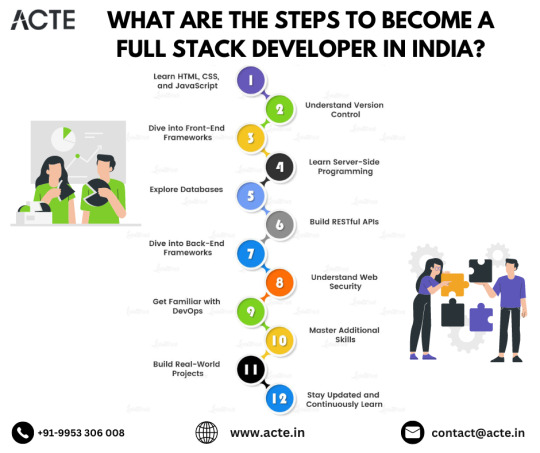
6. Sharpen Your Problem-Solving Skills: Problem-solving is a core competency for any developer. Practice solving coding challenges and algorithms on platforms such as LeetCode, HackerRank, or CodeSignal. Strengthening your problem-solving abilities will prepare you for technical interviews and real-world coding scenarios.
7. Develop Projects and Build a Portfolio: Apply your knowledge by working on diverse projects that showcase your full-stack development skills. Start with simple projects and gradually tackle more complex ones to demonstrate your proficiency. Create a portfolio website to exhibit your projects, expertise, and accomplishments to potential employers.
8. Stay Abreast of Industry Trends: The tech landscape evolves rapidly, so it's crucial to stay updated with the latest trends and technologies. Attend tech meetups, workshops, and conferences to network with industry professionals and learn from their experiences. Follow influential blogs, podcasts, and social media channels to stay informed about emerging trends and best practices.
9. Pursue Internship Opportunities: Internships provide invaluable hands-on experience and exposure to real-world projects. Look for internship opportunities at companies or startups where you can apply your skills in a professional environment. Internships also offer opportunities for mentorship and networking, which can be invaluable for your career growth.
10. Cultivate a Continuous Learning Mindset: Becoming a full-stack developer is a journey of lifelong learning and growth. Stay curious, explore new technologies, and continuously expand your skill set. Be open to adapting to new challenges and opportunities as they arise, and embrace a growth mindset to thrive in the ever-evolving tech industry.
Conclusion: Mastering full-stack development in India requires dedication, perseverance, and a commitment to lifelong learning. By following this comprehensive roadmap, you can acquire the skills and knowledge needed to excel in this dynamic and rewarding field. So, roll up your sleeves, embark on your full-stack development journey, and unlock a world of endless possibilities in India's thriving tech ecosystem.
#full stack developer#information#education#front end development#full stack web development#full stack developer course#frameworks#backend#technology#web development
2 notes
·
View notes
Text
Top Tools and Technologies Every Full Stack Java Developer Should Know
In today's fast-paced software development landscape, Full Stack Java Developers are in high demand. Companies seek professionals who can work across both the frontend and backend, manage databases, and understand deployment processes. Whether you're just starting your career or planning to upskill, mastering the right set of tools and technologies is key.
If you're considering a full stack java training in KPHB, this guide will help you understand the essential technologies and tools you should focus on to become industry-ready.

1. Java and Spring Framework
The foundation of full stack Java development starts with a deep understanding of Core Java and object-oriented programming concepts. Once you’ve nailed the basics, move to:
Spring Core
Spring Boot – simplifies microservices development.
Spring MVC – for building web applications.
Spring Security – for handling authentication and authorization.
Spring Data JPA – for database operations.
Spring Boot is the most widely adopted framework for backend development in enterprise applications.
2. Frontend Technologies
A full stack Java developer must be proficient in creating responsive and interactive UIs. Core frontend technologies include:
HTML5 / CSS3 / JavaScript
Bootstrap – for responsive designs.
React.js or Angular – for building dynamic SPAs (Single Page Applications).
TypeScript – especially useful when working with Angular.
3. Database Management
You’ll need to work with both relational and non-relational databases:
MySQL / PostgreSQL – popular SQL databases.
MongoDB – a widely used NoSQL database.
Hibernate ORM – simplifies database interaction in Java.
4. Version Control and Collaboration
Version control systems are crucial for working in teams and managing code history:
Git – the most essential tool for source control.
GitHub / GitLab / Bitbucket – platforms for repository hosting and collaboration.
5. DevOps and Deployment Tools
Understanding basic DevOps is vital for modern full stack roles:
Docker – for containerizing applications.
Jenkins – for continuous integration and delivery.
Maven / Gradle – for project build and dependency management.
AWS / Azure – cloud platforms for hosting full stack applications.
6. API Development and Testing
Full stack developers should know how to develop and consume APIs:
RESTful API – commonly used for client-server communication.
Postman – for testing APIs.
Swagger – for API documentation.
7. Unit Testing Frameworks
Testing is crucial for bug-free code. Key testing tools include:
JUnit – for unit testing Java code.
Mockito – for mocking dependencies in tests.
Selenium / Playwright – for automated UI testing.
8. Project Management and Communication
Agile and collaboration tools help manage tasks and teamwork:
JIRA / Trello – for task and sprint management.
Slack / Microsoft Teams – for communication.
Final Thoughts
Learning these tools and technologies can position you as a highly capable Full Stack Java Developer. If you're serious about a career in this field, structured learning can make all the difference.
Looking for expert-led Full Stack Java Training in KPHB? ✅ Get industry-ready with hands-on projects. ✅ Learn from experienced instructors. ✅ Job assistance and certification included.
👉 Visit our website to explore course details, check out FAQs, and kickstart your journey today!
0 notes
Text
HTML Interview Questions and Answers for Beginners in 2025
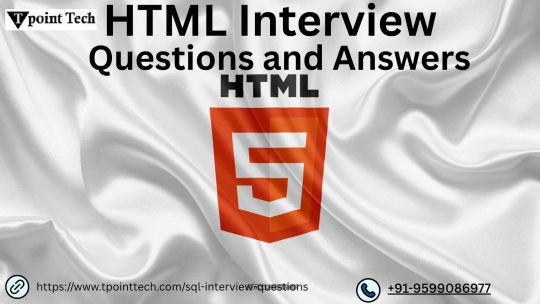
If you’re just starting your journey in web development, one of the first technologies you’ll encounter is HTML—the foundational language for creating web pages. Whether you're preparing for your first job interview or an internship opportunity, being confident in HTML interview questions and answers can set you apart from other candidates.
In this blog, “HTML Interview Questions and Answers for Beginners in 2025,” we’ve compiled the most relevant, updated, and beginner-friendly HTML questions that hiring managers are likely to ask this year. These questions are designed to not only test your basic understanding but also help you think critically about how HTML is used in real-world scenarios.
Why HTML Knowledge Is Crucial in 2025
HTML (HyperText Markup Language) remains the backbone of every website on the internet. Even with advancements in frameworks like React, Angular, and Vue, the core of all web development still starts with HTML. That’s why interviewers consistently assess your understanding of HTML—especially if you’re applying for roles like:
Front-End Developer
Web Designer
UI Developer
Full-Stack Developer (Entry-Level)
In 2025, as more companies move towards web-first experiences, HTML knowledge remains a must-have skill.
HTML Interview Questions and Answers for Beginners
Here’s a curated list of beginner-friendly HTML questions with simple yet effective answers to help you ace your interview.
1. What is HTML?
Answer: HTML stands for HyperText Markup Language. It is the standard markup language used to create web pages. HTML uses a set of elements (called tags) to define the structure and content of a webpage.
2. What are HTML tags and elements?
Answer: HTML tags are used to mark the beginning and end of an element. Example: <p> is an opening tag, and </p> is a closing tag. An HTML element includes the opening tag, content, and closing tag. Example: <p>This is a paragraph.</p>
3. What is the difference between HTML and HTML5?
Answer: HTML5 is the latest version of HTML. It introduces new tags (<article>, <section>, <video>, <audio>, etc.), supports audio/video embedding, and improves semantic structure and browser compatibility.
4. What is the role of the <head> and <body> tags in HTML?
Answer:
contains meta information about the document (title, links, scripts).
contains the visible content that displays in the browser window.
5. What is a semantic tag in HTML5?
Answer: Semantic tags describe the meaning of the content inside them. Examples include <header>, <footer>, <article>, <nav>, and <section>. They improve code readability and SEO.
6. What is the difference between <div> and <span>?
Answer:
is a block-level element used to group larger sections of content.
is an inline element used to group small chunks of content inside other elements.
7. What is the purpose of the alt attribute in the <img> tag?
Answer: The alt (alternative text) attribute provides a text description of the image, which is helpful for screen readers and when the image cannot be displayed.
8. How do you create a hyperlink in HTML?
Answer: Use the <a> tag. Example:
<a href="https://example.com">Visit Example</a>
9. How can you insert a list in HTML?
Answer: There are two types:
Ordered list () – for numbered items
Unordered list () – for bullet points
Example:
<ul> <li>HTML</li> <li>CSS</li> <li>JavaScript</li> </ul>
10. What is the use of the <form> tag in HTML?
Answer: The <form> tag is used to collect user input. Inside a form, you can use input fields, buttons, checkboxes, and other elements to capture data and send it to a server.
11. How do you add a comment in HTML?
Answer: HTML comments are written like this:
<!-- This is a comment -->
12. Can you nest one HTML element inside another?
Answer: Yes, HTML elements can be nested. Proper nesting is essential for the correct rendering of a page. Example:
<p>This is <strong>important</strong> text.</p>
13. What are empty elements in HTML?
Answer: Empty elements do not have closing tags. Example: <br>, <img>, <input>, <hr>
14. What is the purpose of the doctype declaration?
Answer: The <!DOCTYPE html> declaration tells the browser which version of HTML is being used and helps render the page correctly.
15. What are meta tags?
Answer: Meta tags provide metadata about the webpage, such as character encoding, viewport settings, keywords, and descriptions. They go inside the <head> section.
Example:
<meta charset="UTF-8"> <meta name="description" content="Learn HTML interview questions for beginners.">
Final Thoughts
HTML is not just about writing tags—it's about structuring content properly so browsers and users can understand it. By mastering the questions in this blog, "HTML Interview Questions and Answers for Beginners in 2025," you'll gain the confidence to answer any foundational HTML question thrown your way.
Here’s how to make the most of this guide:
Practice writing each tag and structure by hand Build small projects to test your understanding Review real-world examples of semantic HTML Stay updated with HTML5 best practices
Ready for the Interview?
Whether you're preparing for an internship, a junior developer role, or even freelance web design work, these HTML interview questions and answers for beginners are your starting point. Learn them, understand them, and practice explaining them clearly—that’s the key to acing your next interview in 2025.
#HTML interview Question#HTML interview Question for beginners#Interview question for freshers#python for beginners
0 notes
Text
The Future of Web Development: Trends and Strategies for 2024
Introduction
In today’s digital age, web development is more crucial than ever. Businesses like City Insider Inc rely on cutting-edge websites to engage users, drive sales, and establish a strong online presence. With rapid advancements in technology, staying updated on the latest trends in web development is essential for creating fast, secure, and user-friendly websites. This article explores the top trends, tools, and best practices shaping the future of web development in 2024.
1. The Rise of AI and Machine Learning in Web Development
Artificial Intelligence (AI) and Machine Learning (ML) are revolutionizing web development. From chatbots that enhance customer service to personalized content recommendations, AI-powered tools are making websites smarter. Platforms like City Insider Inc can leverage AI to analyze user behavior, optimize SEO, and automate repetitive tasks. Tools such as TensorFlow.js and OpenAI integrations allow developers to build dynamic, intelligent web applications with ease.
2. Progressive Web Apps (PWAs) for Enhanced Performance
Progressive Web Apps (PWAs) combine the best of websites and mobile apps, offering offline functionality, push notifications, and fast loading speeds. For businesses like City Insider Inc, PWAs provide a seamless user experience across all devices. Companies like Twitter and Pinterest have already seen significant engagement boosts by adopting PWAs. With frameworks like React and Angular, developers can build high-performing PWAs that improve retention and conversions.
3. Voice Search Optimization and Voice-Activated Interfaces
With the growing popularity of smart speakers like Alexa and Google Home, voice search optimization is becoming a key focus in web development. Websites must now be structured to answer voice queries naturally. City Insider Inc can stay ahead by implementing schema markup and optimizing for long-tail keywords. Additionally, integrating voice-activated navigation into websites enhances accessibility and user experience, making it a must-have feature in 2024.
4. Motion UI and Interactive Design Elements
Engaging visuals and micro-interactions are dominating modern web development. Motion UI—such as animated buttons, scroll-triggered effects, and 3D graphics—creates immersive experiences. Tools like Framer Motion and GSAP help developers implement smooth animations without compromising performance. For City Insider Inc, incorporating interactive design elements can increase user engagement and reduce bounce rates.
5. Cybersecurity and Privacy-First Development
As cyber threats increase, prioritizing security in web development is non-negotiable. GDPR compliance, HTTPS encryption, and regular vulnerability assessments are essential. Businesses like City Insider Inc must ensure secure payment gateways and data protection measures to build trust with users. Frameworks like OWASP provide guidelines for developing hack-resistant websites, making security a top priority in 2024.
6. Serverless Architecture for Scalability
Serverless computing allows developers to build and deploy applications without managing servers, reducing costs and improving scalability. Platforms like AWS Lambda and Firebase enable City Insider Inc to handle traffic spikes efficiently. Serverless architecture also enhances performance by minimizing backend latency, making it ideal for dynamic web applications.
7. Low-Code and No-Code Development Platforms
Not everyone needs deep coding knowledge to build a website anymore. Low-code and no-code platforms like Webflow and Bubble empower businesses to create functional sites quickly. While professional web development still requires custom solutions, these tools allow City Insider Inc to prototype ideas and launch MVPs faster than ever before.
8. The Growing Importance of Core Web Vitals
Google’s Core Web Vitals (loading speed, interactivity, and visual stability) directly impact SEO rankings. Optimizing these metrics ensures a smooth user experience. City Insider Inc can leverage tools like Lighthouse and PageSpeed Insights to audit and enhance website performance. Faster load times and responsive designs lead to higher conversions and better search visibility.
Conclusion
The future of web development is dynamic, driven by AI, PWAs, voice search, and enhanced security. For businesses like City Insider Inc, adopting these trends ensures a competitive edge in the digital landscape. By focusing on user experience, performance, and innovation, companies can build websites that captivate audiences and drive growth in 2024 and beyond.
Stay ahead with cutting-edge web development strategies—partner with experts to transform your online presence today!
0 notes
Text
How to Build a Website and Application from Scratch
In the modern digital landscape, a professionally crafted website or application is no longer a luxury—it’s a necessity for businesses, brands, and startups alike. Whether you're a solo entrepreneur or managing a growing company, understanding how to build a website and application from the ground up can empower you to bring your ideas to life and reach a wider audience.
Define Your Goals and Requirements
Before you start designing or coding anything, it's critical to clearly define your objectives:
What is the purpose of the website/app?
Who is your target audience?
What features are necessary?
Will it be a static website, dynamic platform, or full-stack web app?
Pro Tip: Create wireframes or sketches of the user interface (UI) to visualize your idea.
2) Choose the Right Tech Stack
Depending on your project, select the technologies that suit your needs. Some popular stacks include:
Frontend: HTML, CSS, JavaScript (React, Vue, Angular)
Backend: Node.js, Python (Django), PHP, Ruby on Rails
Database: MySQL, MongoDB, PostgreSQL
Mobile App: Flutter, React Native, Swift (iOS), Kotlin (Android)
Tip: For startups, using open-source tools or low-code platforms can reduce costs and time.
3) Register a Domain and Choose Hosting
Your domain name is your digital identity. Choose a name that reflects your brand, and register it through a reliable provider like GoDaddy, Namecheap, or Google Domains.
For hosting, consider:
Shared Hosting for small websites
Cloud Hosting (like AWS, Azure, DigitalOcean) for scalable applications
4) Design the User Interface (UI/UX)
An intuitive, mobile-responsive design increases user engagement and conversions. Tools like Figma, Adobe XD, or Sketch can help you prototype the layout before development.
5) Begin Development: Frontend and Backend
Start with building the frontend using frameworks like React or Vue.
Develop the backend API to handle business logic, databases, and server interactions.
Ensure proper data validation, security, and error handling.
6) Integrate Features & APIs
Add features like:
User registration/login
Contact forms
Payment gateways (Stripe, Razorpay, PayPal)
Third-party APIs (Maps, SMS, etc.)
7) Test Thoroughly Before Launch Conduct:
Unit Testing (for individual components)
Integration Testing (for connected modules)
User Acceptance Testing (UAT) to get feedback from real users
Tools: Jest, Selenium, Cypress, Postman
8) Launch and Monitor
Deploy your app/website using tools like:
CI/CD pipelines (GitHub Actions, Jenkins)
Monitoring tools (Google Analytics, Hotjar, Sentry)
Announce your launch across social media, email lists, and digital forums.
9) Market Your Product
Use SEO, content marketing, paid ads, and social media to promote your new platform. Don’t forget to collect user feedback and iterate.
Conclusion
Building a website or application Development from scratch may sound complex, but with the right plan, tools, and mindset, it becomes a structured process. Whether you choose to DIY or hire expert developers, understanding each phase helps ensure a smooth journey from idea to launch.
#Website development from scratch#App development guide#How to build a web application#Full stack development#Custom website development services#business solutions software#custom software development#development of software#full stack developer#ios app development services#it consulting#it services & consulting#mobile app development#software consulting#software development company
0 notes
Text
Full Stack Development Trends in 2025: What to Expect
In the rapidly evolving tech landscape, full stack development continues to be a crucial area for innovation and career growth. As we step into 2025, the demand for skilled professionals who can handle both front-end and back-end technologies is only expected to surge. From artificial intelligence integration to serverless architectures, this field is experiencing some major transformations.
Whether you're a student, a working professional, or someone planning to switch careers, understanding these full stack development trends is essential. And if you're planning to learn full stack development in Pune, one of India’s tech hubs, staying updated with these trends will give you a competitive edge.
Why Full Stack Development Matters More Than Ever
Modern businesses seek agility and efficiency in software development. Full stack developers can handle various layers of a web or app project—from UI/UX to database management and server logic. This ability to operate across multiple domains makes full stack professionals highly valuable.
Here’s what’s changing in 2025 and why it matters:
Key Full Stack Development Trends to Watch in 2025
1. AI and Machine Learning-Driven Development
Integration of AI for predictive user experiences
Chatbots and intelligent systems as part of app architecture
Developers using AI tools to assist with debugging, code generation, and optimization
With these technologies becoming more accessible, full stack developers are expected to understand how AI models work and how to implement them efficiently.
2. Serverless Architectures on the Rise
Reduction in infrastructure management tasks
Focus shifts to writing quality code without worrying about deployment
Increased use of platforms like AWS Lambda, Azure Functions, and Google Cloud Functions
Serverless frameworks will empower developers to build scalable applications faster, and those enrolled in a Java programming course with placement are already being introduced to these platforms as part of their curriculum.
3. Micro Frontends and Component-Based Architectures
Projects are being split into smaller, manageable front-end components
Encourages reuse and parallel development
Helps large teams work on different parts of an application efficiently
This trend is changing the way teams collaborate, especially in agile environments.
4. Progressive Web Applications (PWAs) Becoming the Norm
PWAs offer app-like experiences in browsers
Offline support, push notifications, and fast load times
Ideal for startups and enterprises alike
A full stack developer in 2025 must be proficient in building PWAs using modern tools like React, Angular, and Vue.js.
5. API-First Development
Focus on creating flexible, scalable backend systems
REST and GraphQL APIs powering multiple frontends (web, mobile, IoT)
Encourages modular architecture
Many courses teaching full stack development in Pune are already emphasizing this model to prepare students for real-world industry demands.
6. Focus on Security and Compliance
Developers now need to consider security during initial coding phases
Emphasis on secure coding practices, data privacy, and GDPR compliance
DevSecOps becoming a standard practice
7. DevOps and Automation
CI/CD pipelines becoming essential in full stack workflows
Containerization using Docker and Kubernetes is standard
Developers expected to collaborate closely with DevOps engineers
8. Real-Time Applications with WebSockets and Beyond
Messaging apps, live dashboards, and real-time collaboration tools are in demand
Tools like Socket.IO and WebRTC are becoming essential in the developer toolkit
Skills That Will Define the Future Full Stack Developer
To thrive in 2025, here are the skills you need to master:
Strong foundation in JavaScript, HTML, CSS
Backend frameworks like Node.js, Django, or Spring Boot
Proficiency in databases – both SQL and NoSQL
Familiarity with Java programming, especially if pursuing a Java programming course with placement
Understanding of cloud platforms like AWS, GCP, or Azure
Working knowledge of version control (Git), CI/CD, and Docker
Why Pune is the Ideal Place to Start Your Full Stack Journey
If you're serious about making a career in this domain, it's a smart move to learn full stack development in Pune. Here's why:
Pune is home to hundreds of tech companies and startups, offering abundant internship and placement opportunities
Numerous training institutes offer industry-aligned courses, often bundled with certifications and placement assistance
Exposure to real-world projects through bootcamps, hackathons, and meetups
Several programs in Pune combine full stack development training with a Java programming course with placement, ensuring you gain both frontend/backend expertise and a strong OOP (Object-Oriented Programming) base.
Final Thoughts
The field of full stack development is transforming, and 2025 is expected to bring more intelligent, scalable, and modular application ecosystems. Whether you’re planning to switch careers or enhance your current skill set, staying updated with the latest full stack development trends will be essential to succeed.
Pune’s tech ecosystem makes it an excellent place to start. Enroll in a trusted institute that offers you a hands-on experience and includes in-demand topics like Java, serverless computing, DevOps, and microservices.
To sum up:
2025 Full Stack Development Key Highlights:
AI integration and smart development tools
Serverless and micro-frontend architectures
Real-time and API-first applications
Greater focus on security and cloud-native environments
Now is the time to upskill, get certified, and stay ahead of the curve. Whether you learn full stack development in Pune or pursue a Java programming course with placement, the tech world of 2025 is full of opportunities for those prepared to seize them.
0 notes